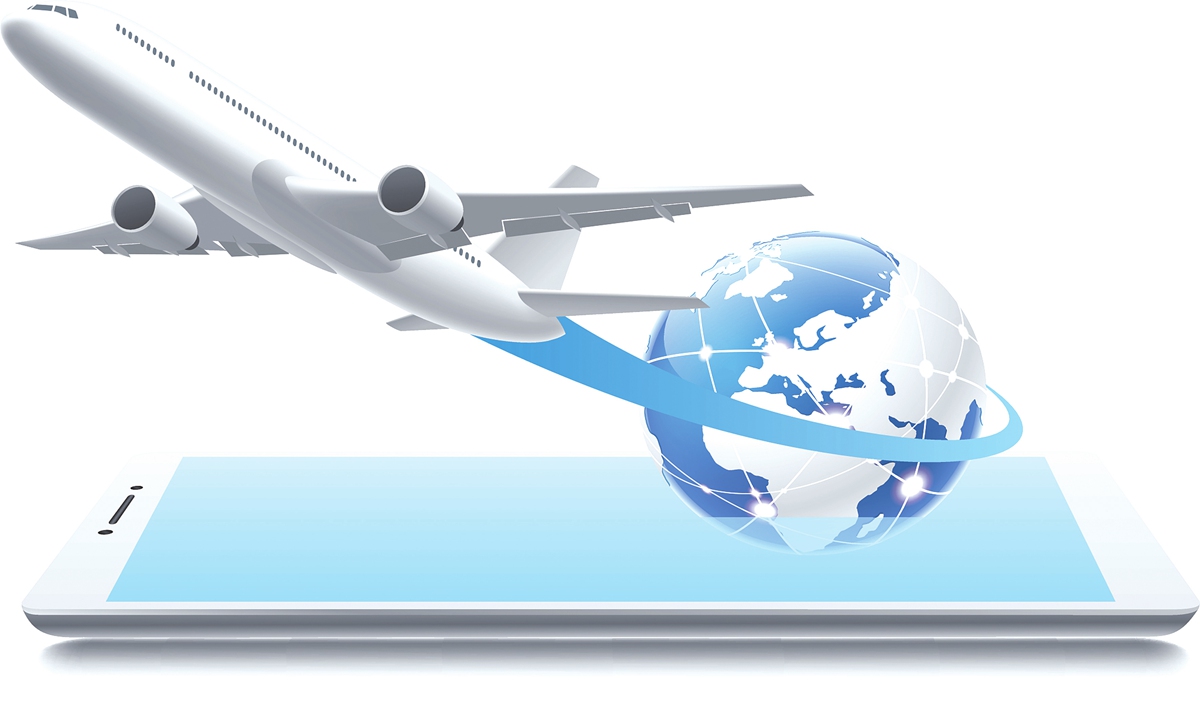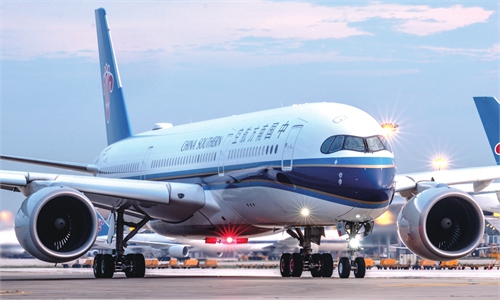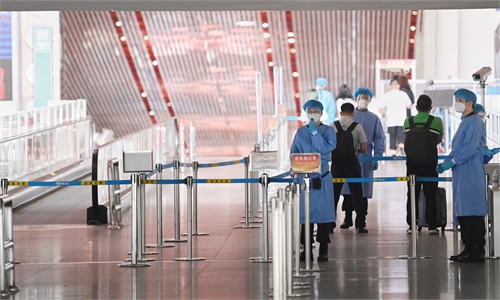Is ‘flight mode’ set to become a thing of the past?
Technology and cost main obstacles in developing in-flight Wi-Fi

Photo: VCG
Turning on flight mode before takeoff is probably one of the most painful moments of any aviation journey in China.
While in-flight Wi-Fi is nothing new, and the Civil Aviation Administration of China (CAAC) has allowed passengers to be online during flight since 2018. Several airlines had tested the water and deployed Wi-Fi on board even earlier.
Air China operated China's first Wi-Fi compatible commercial flight in 2011. In 2014, China Southern Airlines announced the launch of in-flight Wi-Fi services on selected flights on the Beijing-Guangzhou route, offering 50M bandwidth services.
By 2018, China Eastern Airlines had equipped almost all of its wide-body aircraft with in-flight Wi-Fi capability. Airlines including Xiamen Airlines also deployed Wi-Fi on wide-body aircraft.
However, it seems that surfing internet across the skies is still a luxury add-on for passengers even though three years have passed, with the deployment of in-flight Wi-Fi apparently still in an early phases, and the user experience of in-flight Wi-Fi is still restricted by network speed.
Tan Kejian, an official from China Aviation Supplies Holding Company said earlier that the proportion of China's civil aviation using in-flight internet and satellite internet access is about 5.47 percent, according to news portal caijing.com.
This represents a huge gap with developed countries, as the proportion of air-ground internet planes in the US is as high as 85 percent, in Europe it is 50 percent, according to Tan.
An annual report released by CAAC showed that, as of the end of 2020, China had a total of 64 airlines and 3,903 aircraft, of which 3,717 are passenger aircraft. Among them, only 654 aircraft belonging to 20 airlines offer passengers with an in-cabin Wi-Fi service, of which, only 213 aircrafts across 11 airlines allow passengers access in the air, CAAC said.
Even for the passengers on those 213 aircraft, they cannot enjoy the same speed in the ground, passengers may find that they can't even send or receive text messages.
Those aircraft with air-ground interconnection services are dotted throughout major carriers, 94 aircraft from China Eastern, more than 30 of China Southern Airlines, more than 30 of Hainan Airlines, 13 of Air China, and 12 of Xiamen Airlines. Most of these aircraft are wide-body models, such as Boeing 777 and 787, Airbus A330, A350, according to caijing.com.cn.
In addressing onboard Wi-Fi speeds, Zhang Ruiqing, an official from the CAAC said in May that slow wireless network speed on the airplane is mainly due to the limitation of the communication technology systems.
To solve the problem, Zhang said CAAC will work with responsible departments to upgrade network infrastructure, with the first step to upgrade traditional satellite communication technology to high-throughput satellite communication technology, to combine the new 5G infrastructure to upgrade the ATG communication system from 4G to 5G communication technology, and also to optimize the existing network structure and enhance network coverage.
However, technology is not the only reason leading China to lag behind other major markets, the cost for airlines to run this service is also another important reason, which means they need to spend extra money on the equipment - running to millions of dollars - and how and when to recoup costs is a key challenge.
Although there is a huge market volume for commercial aviation, how to realize this economic value is a question still being explored by major carriers.
To cover the costs, market insiders said carriers may choose to cooperate with companies who want to display advertisements via the Wi-Fi services and there is also the option of charging users extra for the service.
In 2019, China Southern Airlines launched an internet service package for domestic flights for the first time. Passengers can pay using membership miles.
In September, China Eastern also launched package services, through which passengers can pay 2500 points or 50 yuan ($7.82) in cash to purchase internet services, including videos and games.
In January of this year, CAAC said as part of a five-year plan, it requires key airlines, hub airports, and support units to complete full digital transformation including the switch from manual decision-making to data-driven decision-making, a commitment, many observers believe, that could mean full in-cabin Wi-Fi coverage is not too far away.




